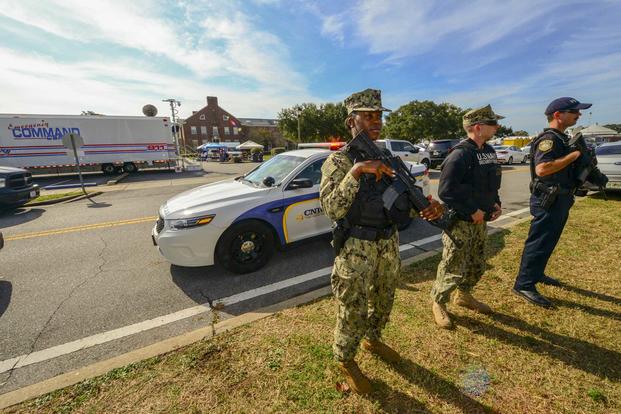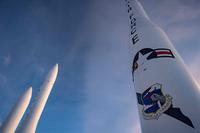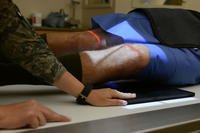The Navy’s top leader pledged to review security procedures after three fatal incidents at bases around the country, but officials are declining to disclose what -- if any -- changes have immediately been implemented.
In a Navy Department-wide message to sailors and Marines, Acting Navy Secretary Thomas Modly said the service must learn from the recent attacks at three federal installations that killed six people.
“It is my expectation that each of our facilities will review physical security and emergency response procedures to minimize the risk of a recurrence,” Modly wrote. “And it is my expectation that all of our people -- military, civilian, and contractor -- be provided with the training, information, and motivation to maintain the vigilance we must all have to spot the warning signs that are often precursors to tragedies such as these.”
Lt. Brittany Stephens, a Navy spokeswoman at the Pentagon, said after any significant incident, leaders “review procedures, assess their effectiveness, and when warranted, adjust our processes accordingly.”
“[But] we will not speak to any specific security measures or procedures employed on our installations/activities/units,” she added.
Related: Official: Base Shooter Watched Shooting Videos Before Attack
Master-at-Arms 3rd Class Oscar Temores, 23, was killed on Nov. 30 at Joint Expeditionary Base-Fort Story in Virginia when his patrol car was struck by an alleged gate runner. Four days later, Vincent Kapoi and Roldan Agustin -- both Defense Department employees -- were gunned down by a sailor at the Pearl Harbor Naval Shipyard in Hawaii. That same week, Ensign Joshua Kaleb Watson, Airman Mohammed S. Haitham and Airman Apprentice Cameron Scott Walters were killed at Florida’s Naval Air Station Pensacola when a Saudi officer opened fire on a classroom there.
In his message, Modly highlighted the heroism on display during the attacks, saying quick decision-making from those willing to run toward the danger saved others’ lives.
“I learned about countless acts of heroism from the first responders, and many of the victims themselves which will come to light as the facts of these tragedies are revealed. I assure you that we will all be proud of these heroes and what they did in moments of terror and extreme danger,” he said.
As Navy officials learn more about each incident, Stephens said they’ll assess tactics, techniques and procedures currently used in security training.
“Where appropriate, we incorporate any new processes into the overarching security awareness training program,” she said.
The Navy and Marine Corps also review security processes and emergency response procedures annually, Stephens added. Every installation, command or unit is required to complete small-unit level or online active shooter and emergency response training, she said.
“The second part mandates a review of their organization’s emergency action plans, and when complete conduct a drill on these procedures in their individual spaces,” Stephens said.
Defense Secretary Mark Esper said earlier this month he’s also considering several ways to protect military installations, though he, too, declined to offer details about what has or could change.
-- Gina Harkins can be reached at gina.harkins@military.com. Follow her on Twitter @ginaaharkins.
Read More: Proposed Ban on Tobacco Sales to Those Under 21 Would Affect Troops














